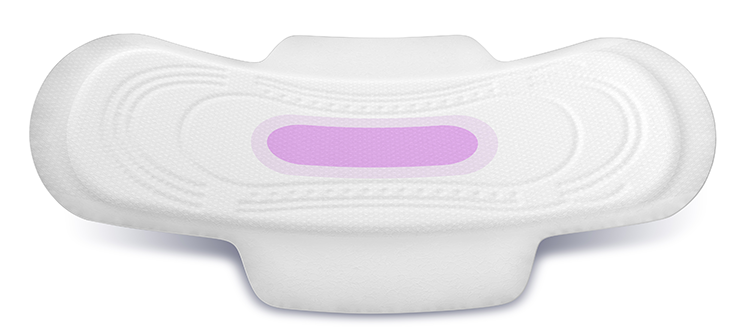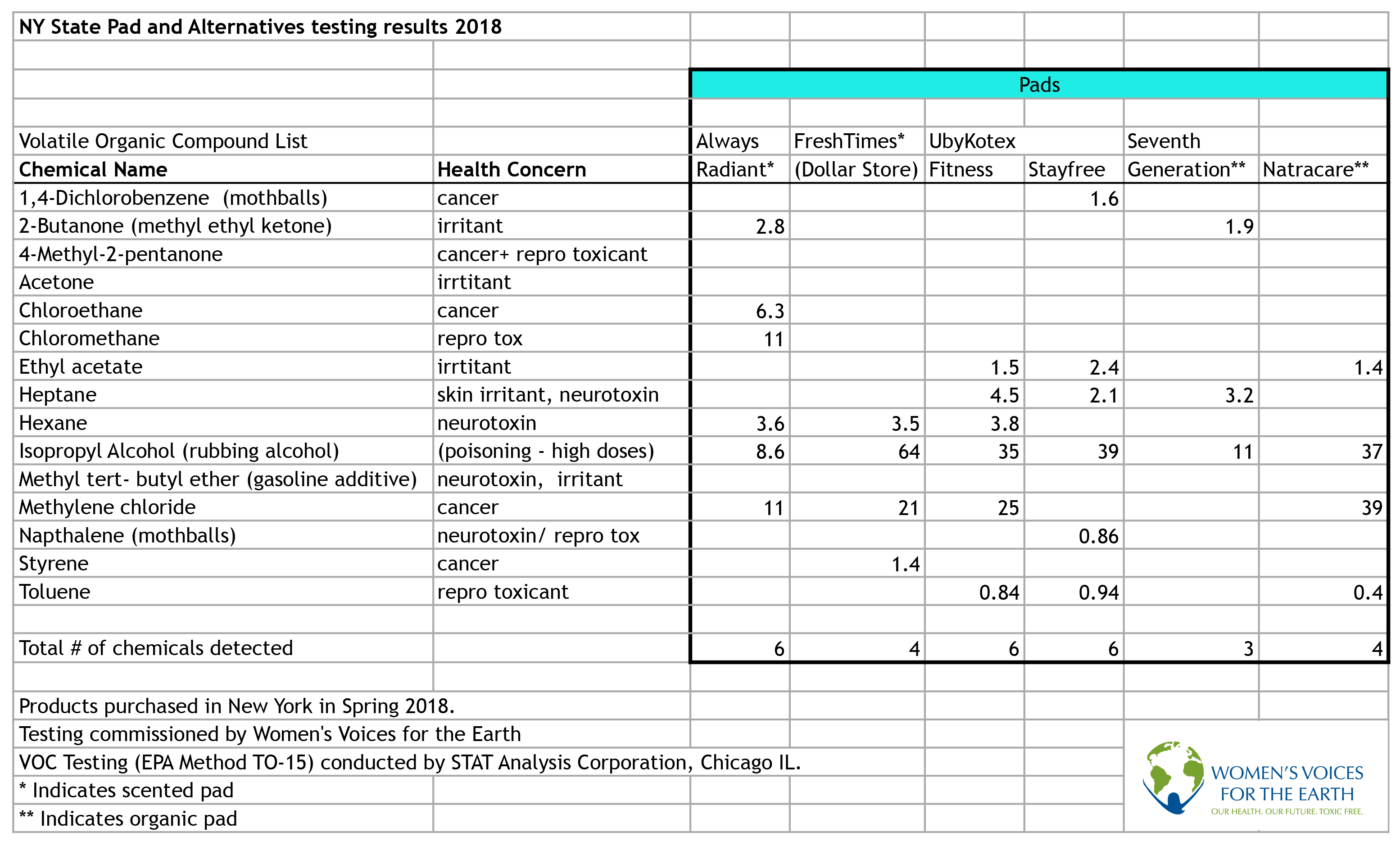VOCs in Menstrual Pads and Cleaning Up Supply Chains
 |
| Jamie McConnell Director of Programs & Policy |
Women’s Voices for the Earth recently tested menstrual pads for VOCs (volatile organic compounds) and detected emissions of reproductive toxins and carcinogens including styrene, chloroethane, methylene chloride, methyl ethyl ketone and toluene from the products. The results add to a body of testing of menstrual products, like pads and tampons, and helps fill out the picture of what ingredients or contaminants may be found in these products. This is necessary because manufacturers are not required to disclose the ingredients, making it difficult to know exactly what people are being exposed to in these products. Legislation recently passed in New York that’s awaiting the Governor’s signature for it to become law would change that by requiring the disclosure of intentionally added ingredients, including ingredients found in fragrance.
The levels WVE has detected in testing are in parts per billion (so a very small level), so it’s likely the presence of some of these chemicals are not intentionally added, but rather a result of contamination somewhere in the supply chain. The fact that the levels are so low doesn’t mean it’s not harmful—in fact there is little to no research on the impacts low levels of harmful chemicals may have on health, particularly from vaginal exposure and absorption.
WVE’s testing results and the results of other testing underscore the need for companies to disclose what ingredients they use in these products AND the need to clean up the supply chain to help reduce contaminants. Some best practices for reducing contaminants may include:
- Use of ultrasonic cleaning methods to clean and sanitize manufacturing equipment instead of using cleaning products containing harsh solvents
- Testing packaging to ensure chemicals from plastics and other materials are not leaching into the product.
- Regularly testing product batches for the presence of harmful chemicals to help identify the source of contamination
- Requiring ingredient transparency from suppliers to help identify potential contaminants
- Sharing best practices with other companies to help create an industry-wide standard
There are likely many more steps companies can take to reduce contaminants, which is why it is critical companies share best practices with one another to help reduce this industry-wide problem. Harmful chemicals were also found in “green” brands so the issue isn’t just confined to conventional manufacturers.
It shouldn’t be the responsibility of advocacy organizations like Women’s Voices for the Earth to identify and raise concerns about these issues—the responsibility should lay with the manufacturers to routinely test their products and have a chemical screening process that reduces or eliminates the use of harmful ingredients and presence of toxic contaminants.
The victory in New York will give consumer more information about what ingredients they may be exposed to, but the solution doesn’t stop with disclosure. Companies need to address these supply chain issues to ensure the safety of their products.




